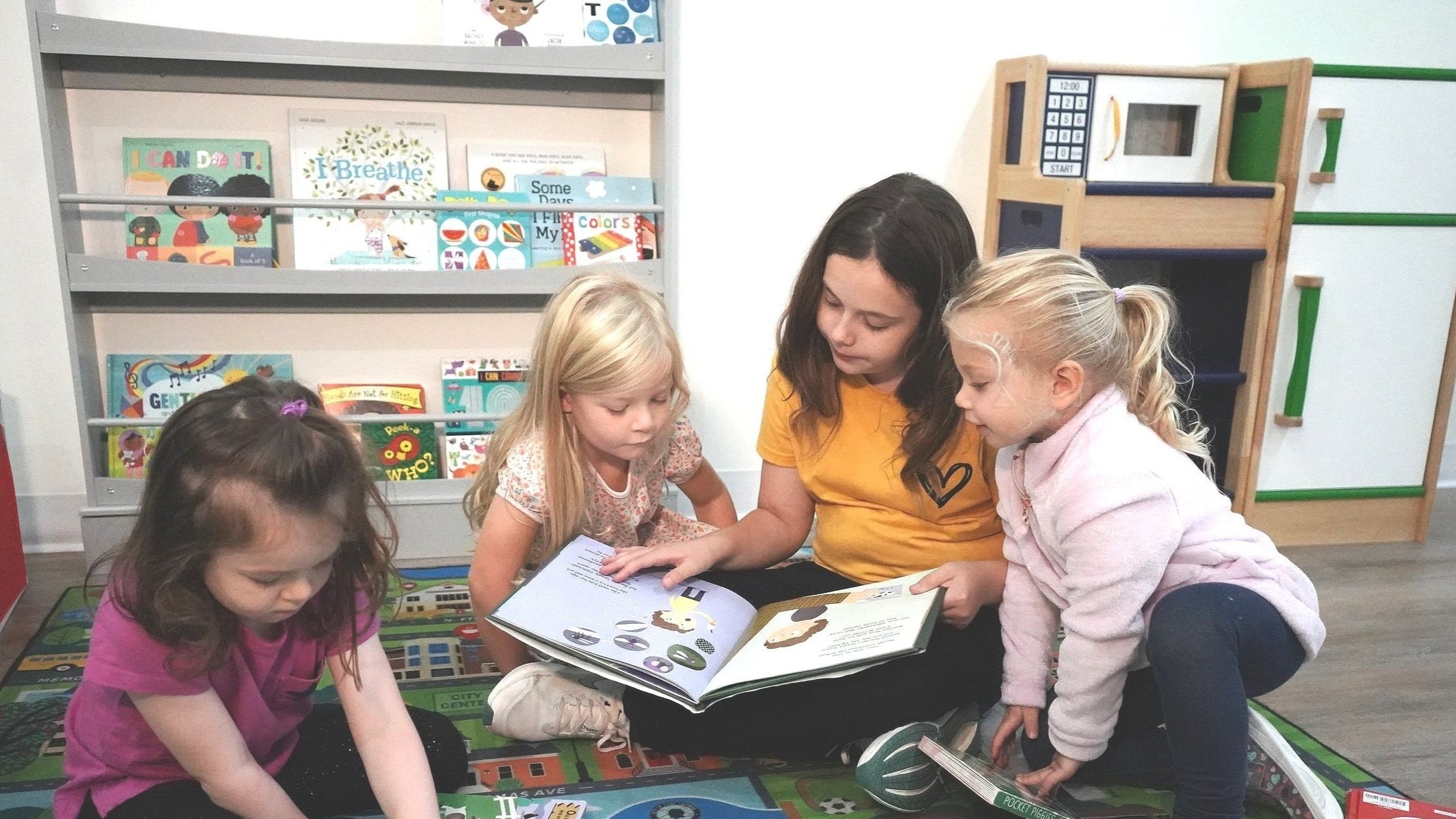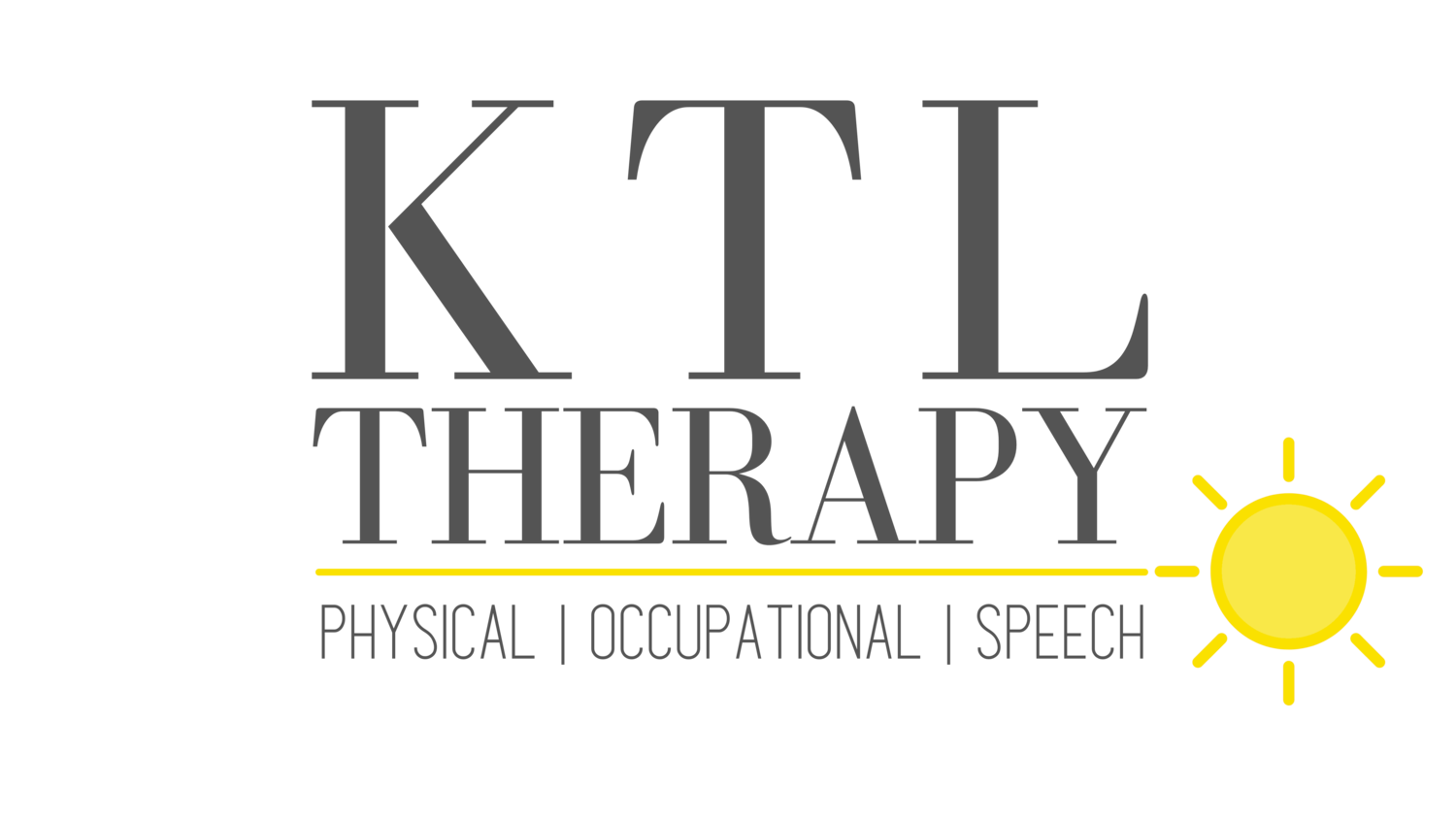
THE KTL BLOG
Our therapists share tips and insights to support you and your child!
Building Language with a Barrier Game
Therapy is most effective as children are fully engaged in play-based tasks. Barrier games offer ample opportunities for a child’s language development while keeping their attention and interest.
8 Exercises to Improve Your Child’s Walking Pattern
Adapted from the post “Why Does My Child Toe Walk?”
Walking on the toes or the balls of the feet, also known as toe walking, is fairly common in children who are just beginning to walk.
Teaching Your Child Core Vocabulary
Adapted from the post “Footsteps to Future Success “
Learn how to help your child increase their core vocabulary and download a FREE PDF titled “A Year of Core Words” for you and your child to work on.
Tummy Time With Your Baby
Encouraging tummy time in the first few months of life is extremely important in helping your baby learn almost all necessary developmental skills as they grow.
7 Strategies to Practice Stair Climbing with Your Child
Being able to climb the stairs is an extremely important gross motor skill for your child to master in order for them to safely and independently navigate their environment at home, school, and in the community.
What Do I Do After My Child Gets A Diagnosis?
No one knows your child better than you do. What if you suspect something more is going on?
Occupational Therapy Evaluation: What to Expect
Whether your child has been referred to occupational therapy (OT) by another professional, or you’re wondering if treatment would be beneficial for your child, the first step is to receive an OT evaluation. But what does an evaluation look like?
A Picture Says A Thousand Words
Picture cues can be used to create a visual schedule for your child. A visual schedule can provide many different benefits for a child. The biggest benefit of a picture schedule is being able to communicate a routine for your child.
7 Core Strengthening Exercises for Children
A strong core serves as the foundation for the rest of your body as it moves throughout the day. Whether your child is running and climbing at the playground or sitting in a chair coloring a picture, their core is acting as a stable base as they complete these skills. Children should begin gaining core strength in infancy with tummy time, rolling over, sitting and crawling.
Potty Training Readiness Skills: How to Know When Your Child is Ready
Curious if your child is ready for potty training? It’s important that both you and your toddler are prepared for this exciting transition! Did you know that developmentally speaking, the transition from diapers to underwear follows a generally predictable progression?
Little People, Big Emotions
We know it’s acceptable to feel every emotion, and as adults, we are able to match our reaction to the situation. Children don’t innately have the skills to do this, so they must be taught how to regulate their emotions.
10 Fun Ways To Practice Sitting With Your Baby
Watching your baby gain more independence with sitting is an exciting milestone for many parents, but it is important to remember not to rush your baby into learning a new skill if they don’t seem ready.
Why Does My Child Toe Walk?
Walking on the toes or the balls of the feet, also known as toe walking, is fairly common in children who are just beginning to walk. As they gain more practice with walking, most children will outgrow this toe walking pattern and begin to walk flat on their feet.
4 Tips to Help Your Child Make “R” Sounds
Have you noticed your child’s speech sounding different from other children his age? It could be that your child is having trouble making the R sound in speech. Perhaps, he is making a W sound or an Ah sound instead of the R sound? For example, does he say “wun” for “run” or “biggah” for “bigger”?
Ditching the Training Wheels: 10 Steps to Teach Your Child to Ride a Bike Independently
Learning to ride a bike is not only a rite of passage, it can be an extremely positive and rewarding experience during childhood.
Developmental Speech Disorders
Many parents refer their children to a Speech Language Pathologist because they fear their child is not making sounds/words or they can’t understand what their child is saying. A common comment Speech Language Pathologists hear is “my child is not talking, they just jabber or they are not making any sounds at all.” In many cases these children are using words and understanding how to use language, therefore they are just having difficulty making the sounds and putting the sounds together so that others understand what they are trying to communicate.
Working with Your Child on the S Sound
Did you know that many young children have difficulty with the S sound? While it is a common sound error, most children can correctly produce the S sound by the age of five. If you are worried about your child’s speech you may need to consult with a speech and language pathologist. In the meantime, here are some tips for teaching your child how to correctly produce the S sound.
Footsteps to Future Success: Vocabulary Development
If your child is struggling to express his basic wants and needs to you, try implementing a picture system to teach core vocabulary words. For example, words like “yes/no, stop/go, in/out, on/off, help, please, and wait” are part of our basic core vocabulary system that help children express their thoughts and ideas to communication partners.
Family Activities: Making Balance Fun
These fun exercises target the skill of balance by standing on one leg. Take a few minutes before dinner to practice these together as a family! Let’s walk like a penguin, prance like a horse, stomp like an elephant, and stand like a flamingo.










